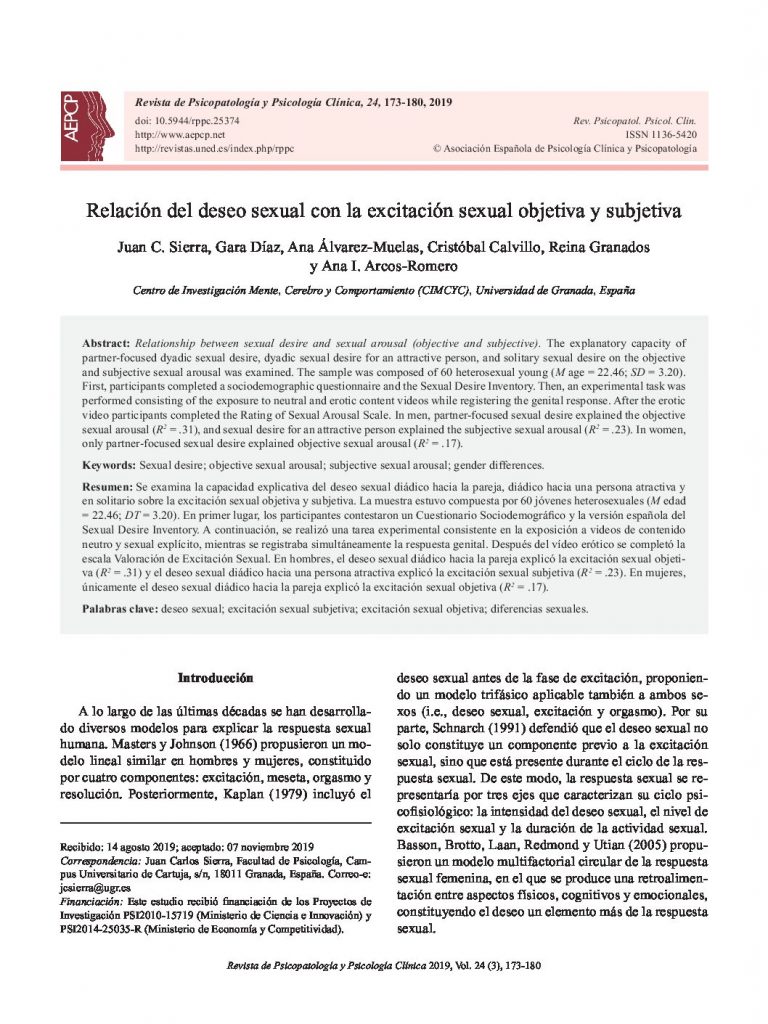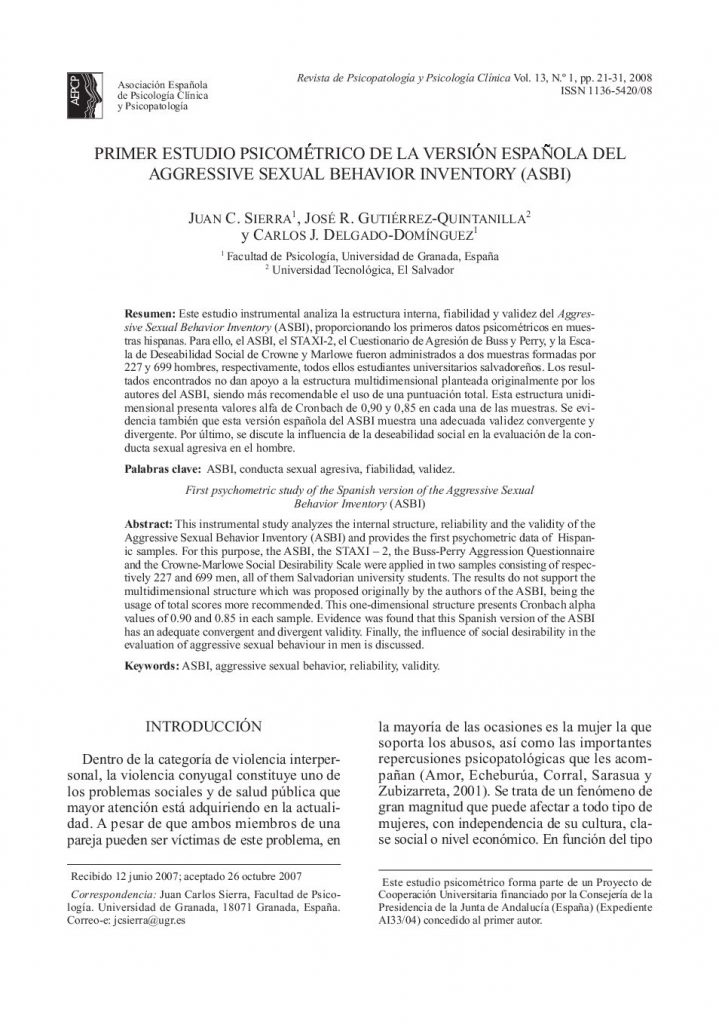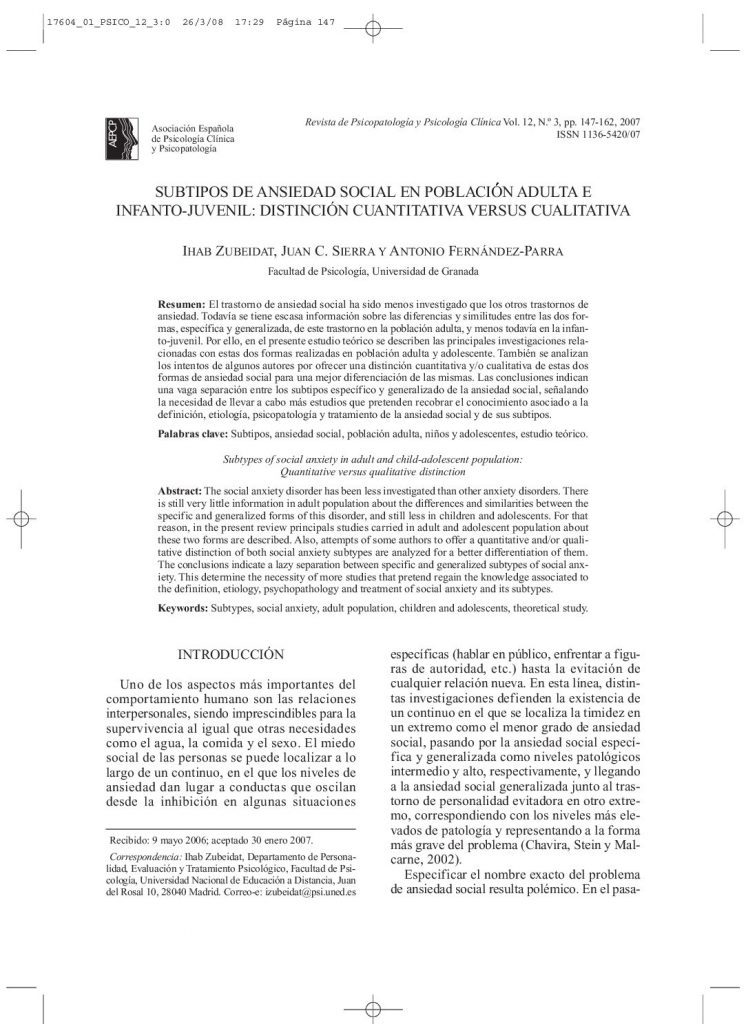Relación del deseo sexual con la excitación sexual objetiva y subjetiva.

- Descripción del perfil psicopatológico y delictivo en pacientes drogodependientes en tratamiento.
- La persona del terapeuta: Validación española del Cuestionario de Evaluación del Estilo Personal del Terapeuta (EPT-C).
- ¿Inestabilidad en el lado oscuro? estructura factorial, invarianza de medición y fiabilidad de la Dirty Dozen Dark Triad en población general de Lima.
- Medición de la comorbilidad depresiva en drogodependientes: Validez y eficacia diagnóstica del Inventario de Depresión de Beck (BDI-II) en dominicanos con múltiple consumo de sustancias.
- Relación del deseo sexual con la excitación sexual objetiva y subjetiva.
- Conducta suicida en Colombia: Una revisión sistemática.
- Protocolo unificado para el tratamiento transdiagnóstico de los trastornos emocionales en adolescentes a través de internet (iUP-A): Aplicación web y protocolo de un ensayo controlado aleatorizado.
- Conductas suicidas en la adolescencia: Una guía práctica para la intervención y la prevención.
The explanatory capacity of partner-focused dyadic sexual desire, dyadic sexual desire for an attractive person, and solitary sexual desire on the objective and subjective sexual arousal was examined. The sample was composed of 60 heterosexual young people (Mage = 22.46; SD = 3.20). First, participants completed a sociodemographic questionnaire and the Spanish version of the Sexual Desire Inventory. Then, an experimental task was performed consisting of the exposure to neutral and erotic content videos while registering the genital response. After the erotic video participants completed the Rating of Sexual Arousal Scale. In men, partner-focused sexual desire explained the objective sexual arousal (R2 = .31), and sexual desire for an attractive person explained the subjective sexual arousal (R2 = .23). In women, only partner-focused sexual desire explained objective sexual arousal (R2 = .17).
Se examina la capacidad explicativa del deseo sexual diádico hacia la pareja, diádico hacia una persona atractiva y en solitario sobre la excitación sexual objetiva y subjetiva. La muestra estuvo compuesta por 60 jóvenes heterosexuales (M edad = 22.46; DT = 3.20). En primer lugar, los participantes contestaron un Cuestionario Sociodemográfico y la versión española del Sexual Desire Inventory. A continuación, se realizó una tarea experimental consistente en la exposición a videos de contenido neutro y sexual explícito, mientras se registraba simultáneamente la respuesta genital. Después del vídeo erótico se completó la escala Valoración de Excitación Sexual. En hombres, el deseo sexual diádico hacia la pareja explicó la excitación sexual objetiva (R2 = .31) y el deseo sexual diádico hacia una persona atractiva explicó la excitación sexual subjetiva (R2 = .23). En mujeres, únicamente el deseo sexual diádico hacia la pareja explicó la excitación sexual objetiva (R2 = .17).





